Inverness in Scotland is well known for the Loch Ness Monster but according to FRANCES ABBOT, it also has its fair share of ghosts and spirits residing in these five local haunts!
Inverness Castle, IV2 3EG
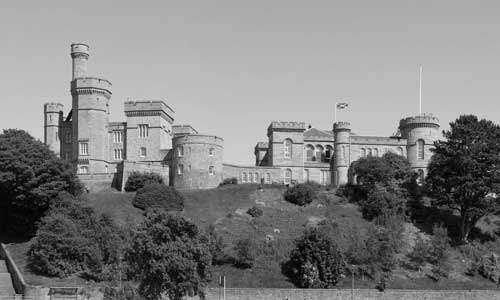
The red sandstone building sitting atop a hill by the River Ness which runs through the centre of the town is a fairly modern construction built in the mid nineteenth century and serving nowadays as the courthouse. However, it is only the latest of the many castles which stood on the same elevated ground.
Inverness’ first castle was built mid-eleventh century and is reputed to have been the home of King Macbeth. This was replaced by a stone building in the reign of King David I (1124-1153) and largely destroyed by Robert the Bruce in early 1300s. This in turn was rebuilt a hundred years later.
The castle was besieged in 1562 during the civil war surrounding Mary Queen of Scots. The governor, Alexander Gordon, denied the Queen entrance on the orders of his clan chief. She found lodgings in a house in Inverness until the castle fell to rival clans. Alexander Gordon was hanged for his treason.
After the last battle to be fought on British soil at Culloden in 1746 the castle was blown up by the forces of Bonnie Prince Charlie’s defeated army.
Shakespeare’s Macbeth is said to have murdered Duncan in the first Inverness Castle. True or not, the ghost of King Duncan is to be seen walking along the riverside the beneath the castle hill.
Discover more Haunted Places to Visit in the UK and Ireland here
Inverness Falcon Foundry, 7-9 Falcon Square
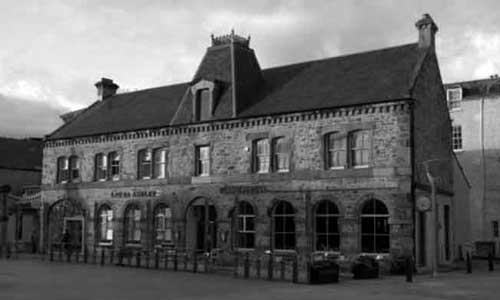
The railway reached Inverness in 1855 and behind the railway station in 1858 a foundry was opened by John Falconer. It fell into disuse and much of the foundry was destroyed but for a portion that has been listed as a category B building, one of the few that remain of Inverness’ Victorian industrial past.
A shopping centre was opened nearby in 1983. This was refurbished in 1993, and plans to make an extension were held up until 2002 because the listed Falcon Foundry was in the way. To overcome the problem the old foundry was dismantled brick by brick and rebuilt at a ninety degree angle to its former position and placed to one side of a public piazza named after the foundry. It now fronts Falcon Square and houses outlets for Laura Ashley and Pizza Express.
When the building was moved it seems to have carried with it the ghost of a factory worker injured on the site, for since the shops opened light bulbs and fuses have blown and doors open and close without any human hand. Shop workers blame the ghost of a workman injured and killed in the foundry.
Eden Court Theatre and Bishop’s Palace, IV3 5SA
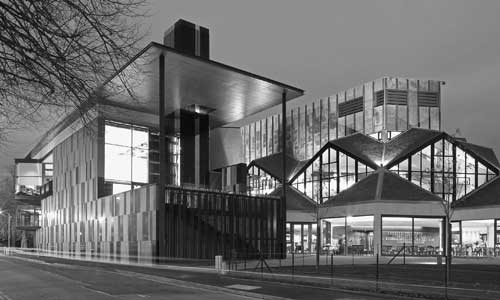
On the banks of the River Ness, a theatre of strikingly modern design was built in 1976 in the grounds of what was once the official residence of the Bishop of Moray. The house was built for Bishop Robert Eden in the nineteenth century. It still stands and was incorporated into the new theatre which was given his name.
After a recent two year refurbishment the centre, comprising Eden Court Theatre and the Bishop’s Palace, houses two theatres, two cinemas, two dance/drama studios and three floors of dressing rooms. It is now Grade A listed.
Two ghosts have been seen. Since the late nineteenth century, when she committed suicide, the ghost of the bishop’s wife has visited the palace. For some reason her last sighting was in 1980. The other ghost is that of a small child, a little girl who can be seen in the gardens.
One more ghost inhabits the scene. It’s invisible, but it makes its presence felt. An usher reports being yanked backwards by an unseen hand on his shirt collar when he was entirely alone.
Inverness Former Telephone Exchange, Friar’s Lane
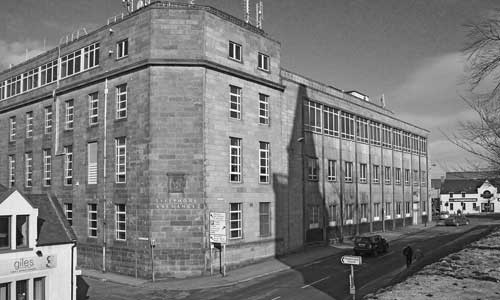
A Dominican priory was founded in Inverness in 1233 by the Black Friars. It was dissolved in 1542. The only part of the priory that has survived is a solitary pillar and stone carving of a knight which is to be found in the tiny Greyfriars graveyard alongside what used to be the telephone exchange.
This latter is a large, ugly, grey building haunted by the ghost of a Black Friar. There have been many sighting of what has been described as a lady in black, but this may well be the same ghost, the figure of the black-cloaked friar.
Ness Islands
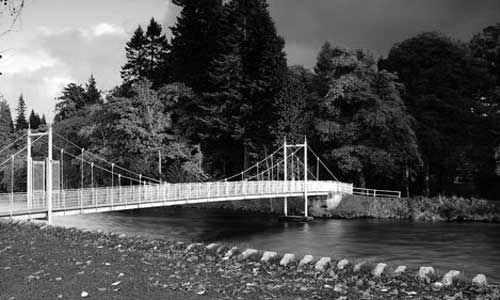
The River Ness flows from Loch Ness through the centre of Inverness and out into the Moray Firth. For a stretch, a little way before the river passes through the main part of the town, it divides and creates a series of small wooded islands where the inhabitants of the town can enjoy a stroll along leaf-strewn paths, over small iron bridges, or sit on wooden benches listening to the running water and spotting the wildlife.. The islands are lit at night and at certain times of the year it can be an enchanting place.
However, recently Highland Paranormal Group was enticed there by the vision of a woman and a smell of decay. Members reported feeling shivers down the spine, and one ghost hunter was struck by an invisible elbow in the chest. The group plans to return with a medium to make further investigations.
FRANCES ABBOT has gone from writing plays to be performed by children and arts/community groups to writing short stories and is now writing a crime novel. You can follow her on twitter @AbbotFabbot.



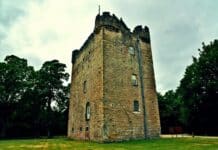


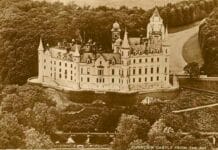

Your website has a slight error – It states that: The castle was besieged in 1592 during the civil war surrounding Mary Queen of Scots. The governor, Alexander Gordon, denied the Queen entrance on the orders of his clan chief.
She was executed in 1587!
Yes you are correct Allison! Thanks for the pickup. It was actually the siege of 1862 we were taking about!